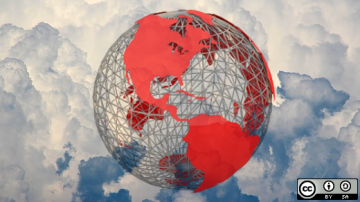In my career conducting international business, I traveled to more than 80 countries worldwide. I was always struck by how strongly regions of the world are connected, and I began studying the forces of globalization as a result.
Several books on this subject were critical to this research. But the one I'd like to highlight here is World 3.0: Global Prosperity and How to Achieve It by Pankaj Ghemawat. This book first taught me how little the global community is connected—but also how far it has come compared to the past. During Prof. Ghemawat's research, he worked with DHL and ultimately helped develop the DHL Global Connectedness Index, which tracks how well the global community is interacting in four key measurements: trade, investment, telecommunication, and travel/migration. From that work, I developed and delivered a presentation on global connectedness, which stressed that the world should increase its scores on those four measurements of globalization, as they are directly linked to food supply, health, security, pollution, jobs and other global benefits.
In this article series, I'll present my research from that period, then explain how we might think about the intersection of globalization and open organization principles around the world today. When people use terms like "globalization" and "global connectedness," in most cases what they really mean is "building coordinated communities to provide goods/service globally and address global issues." Open organization principles are applicable here—but in this context, on a global scale.
But before I can explain that interconnection, I'll first need to outline Prof. Ghemawat's criteria. In this article, I'll do that, with a special emphasis on the way open organization principles are critical to all of them.
Trade
By "trade," I'm referring to the imports and exports of goods and services between countries. It's a key dimension of a globally connected world. Trading extremely simple products and services might be possible via electronic transactions, perhaps over the internet. But on the other hand, highly complex products may require a company to build a distribution network in a wide range of countries worldwide. In this case, then, connectivity, collaboration, and leveraging other open organization principles would be extremely important. In my last job, for example, I set up product distributors throughout Europe and the United States and a production operation in China. Building a strong relationship was very important, difficult and took time and effort. I had to use open organization principles to their fullest.
Investment
Global financial investments also have an impact on global connectedness. If an investor simply purchases shares of an overseas company or deposits funds in an overseas bank account, then more complex relationships are not as critical. But if a company wants to invest in a factory (or sales office for that matter) in a foreign country, then a great deal of interpersonal interaction is required. Economists define these two types of investments differently; they call the latter "foreign direct investment" or FDI. Projects focused on FDI get people working closely with each other across traditional geographic boundaries. Here again, open organization principles will play an important role.
Communications
When considering global communications, think of two broad categories: verbal communications and written communications. The former may involve, for example, telephone communications—simply having the ability to get on a telephone and affordably talk to someone anywhere on the globe. Even today, in many parts of the world, this is not technically possible. On top of that, language becomes a problem internationally, as many people aren't communicating in a common language. These issues are being addressed, but according to the 2019 DHL Global Connectedness Index, this has been more difficult to measure than in the past. Today, there are simply too many communication methods to make tracking this dimension as easy as it was in the past, and those methods seem to be increasing at an exponential rate.
Thanks to proliferating internet access, written forms of communication are also increasing worldwide, but measuring, again, is more difficult to do. For this reason, I'd guess that the next real technological breakthrough will involve both foreign language electronic verbal communication (interpreting) and written communication (translating) software. This software is improving all the time, and could greatly contribute to global communications and information sharing between languages. This, then, will all lead to better integration and spread of open organization principles, as communications are sure to continue to increase worldwide. (Personally, I don't think this technology will replace person-to-person interaction, but could certainly support it.)
Travel/migration
The last factor in the DHL Global Connectedness Index is the movement of people between countries. The first question to ask here is: "Why are people leaving a country and crossing borders? Why do people go from one country to another?" Reasons may include: for better education, for tourism purposes, for economic opportunities, and for safety (e.g., escaping war). Whatever the reason, it will determine how much people will interact with others in the host country. Wanting to go to a foreign country and being forced to leave one's home country are very different situations. The DHL Global Connectedness Index tries to measure factors like this. Open organization principles can be helpful here, particularly in community-building efforts, and in efforts to promote inclusivity.
Although these factors are always shifting, people of the world will continue to communicate, collaborate, interact, and influence each other on an ever-expanding scale.
And yet, if you study the DHL Global Connectedness Index, you will find that in all four measurements of trade, investment, communications and travel, the world is far less connected than it could be. More interaction still occurs within national borders than between countries. But as I will demonstrate in future articles of this series, global connectedness has a rather short history, relatively speaking, and we're still learning how best to collaborate and govern in a globally connected world. Understanding the role of open organization principles in this work will become even more important in the years ahead.
Think global, act local
As we consider these issues and the impact open-style thinking can have on them, we'll naturally begin to ask: Where—and on what scale—should we begin addressing these problems? Are the issues personal, local, national, or global in their scope and impact?
As we'll see in future articles in this series, issues like these are often too complex to be confined to just one of those scales. That's why it's important to think about "glocalization" to address these issues by respecting both local concerns and global impact.
Take the coronavirus for example. It impacts all humanity and requires an open, global discussion applying open organization principles. And global organizations, like the World Health Organization (WHO), will be involved in determining and communicating guidelines for combating the spread of COVID-19. But the issue is a personal one, too, as individuals learn new ways to take responsibility both for their health and the health of those around them.
So, as we continue exploring the dimensions of the DHL Global Connectedness Index, we should remember that many issues cut across all scales of human activity—and that our responses, based on open principles, should also operate at multiple levels. They should be adaptive to their contexts.
In the next article, I'll examine a short history of globalization. Interestingly enough, open organization principles have been at work since the beginning. I'll discuss globalization up to the Industrial Revolution (around the 1800s). In a later installment, I will discuss the evolution of globalization from the Industrial Revolution to the present day.
Armed with insight from the past, I want to offer proposals for moving forward on issues like pandemics, climate change, global pollution, and others.









5 Comments